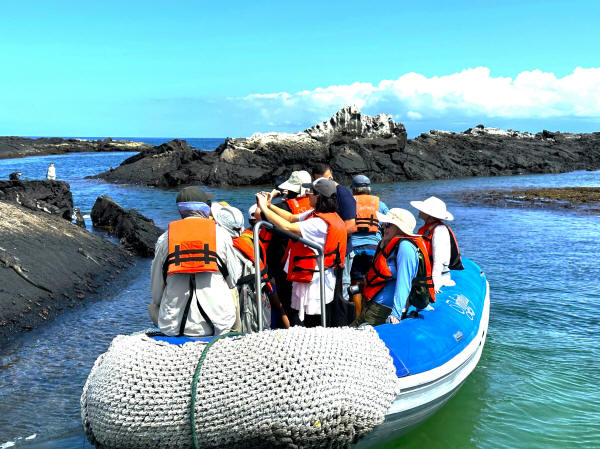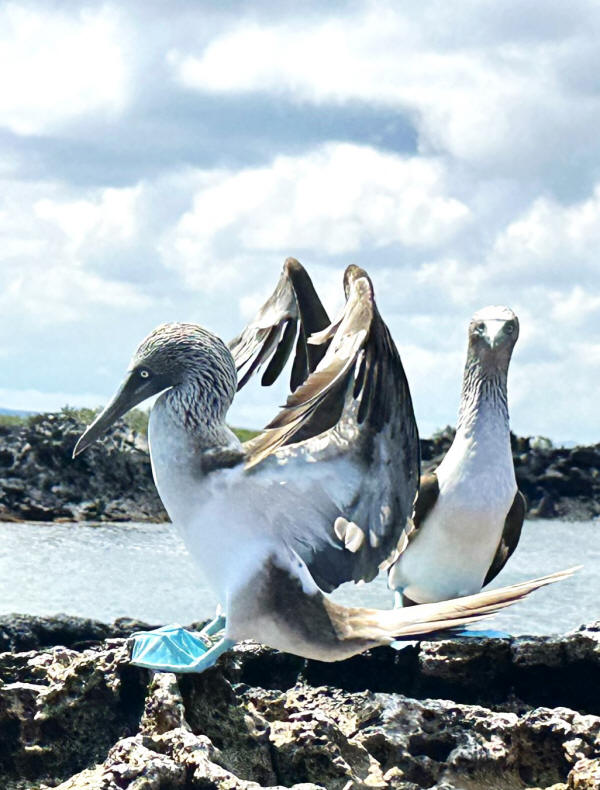Isabela is the largest of the Galapagos islands, and one piece of information the guides gave us was interesting; each volcano had it's own species of saddleback land tortoise. The lava is so sharp that the flatlands created a natural barrier preventing interbreeding, and they all diverged as a result.

But that was actually pretty awesome. The lava was kind of incredible, with a wide variety of textures and patterns that made every step of the hike interesting. A lot of the lava was indeed sharp; some of it was like glass. We were on a marked trail that was mostly flat or rippled; I don't think I'd want to blaze any trails on the island.
 |
 |
 |
 |
 |
There were other things; sea iguanas, tidal pools with puffer fish and sea turtles (some of which were connected to the sea by small crevices, so the fish would come in as babies and they get to big to return to the ocean), herons, small salt water marshes, areas where vegetation had taken a hold. But the big surprise was a colony of flamingos in a lagoon farther inland (which might have been fresh water, forgot to ask).
 |
At the end of the hike, we re-boarded the pangas and followed the coastline, seeing large groups of sea iguanas mixed in with penguins, and our first large group of blue footed boobies.
 |
 |
 |
 |
|
|
|

We returned to the Infinity and had lunch while the boat repositioned to Elizabeth Bay. There's no landing point, but we did a panga ride through the mangrove swamp (it's not really a swamp, just an area that has dense mangrove forests, but because Mangroves grow in shallow water it makes it look like one). There were plenty of birds, mostly herons and pelicans, and large numbers of sea turtles and small fish. It's a home to a large colony of penguins as well, and we did see a number of them swimming about.

 |
|
 |
We headed out after a few hours, but instead of heading directly for the Infinity, we took a trip out to Marielas Islet, seeing small outcroppings of lava sticking out of the water that were croweded with flightless cormorants and sea lions. There are some seals elsewhere on the island, but we didn't see them; and our guide explained the big difference between a sea lion and a seal is that sea lions have ear flaps, which I'm not sure I could really spot anyway. Marielas Islet itself is a man made penquin sanctuary; apparently the penquin population dropped by 50% in El Nino years (the warmer water reduces the fist count). There aren't a lot of good breeding areas for the penguins, so they holowed out a bunch of small holes above the water line. We also saw a frigate bird up close for the first time, and it's as cool looking bird at rest as it is in the air.
We stayed there until sunset, heading back while the sun disappeared behind the island.
 |
 |

Then it was dinner and bed before the start of the next day.